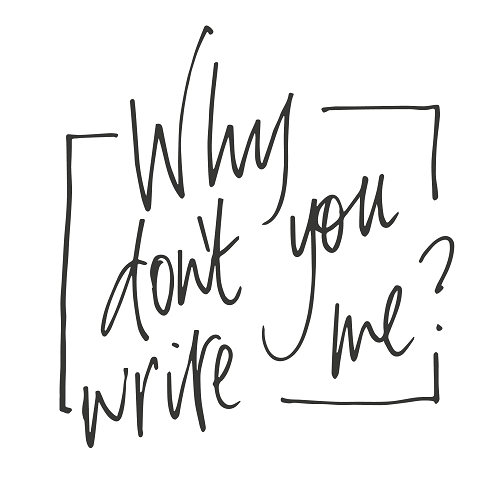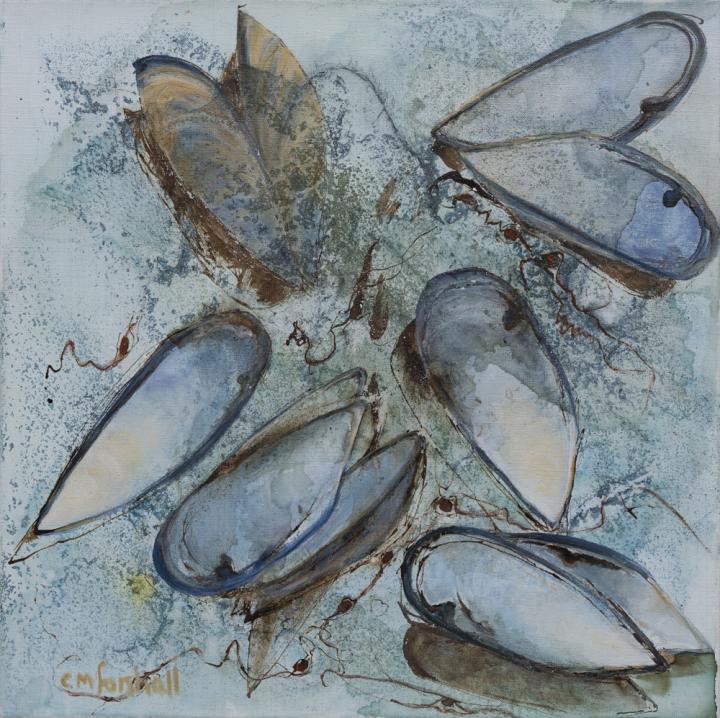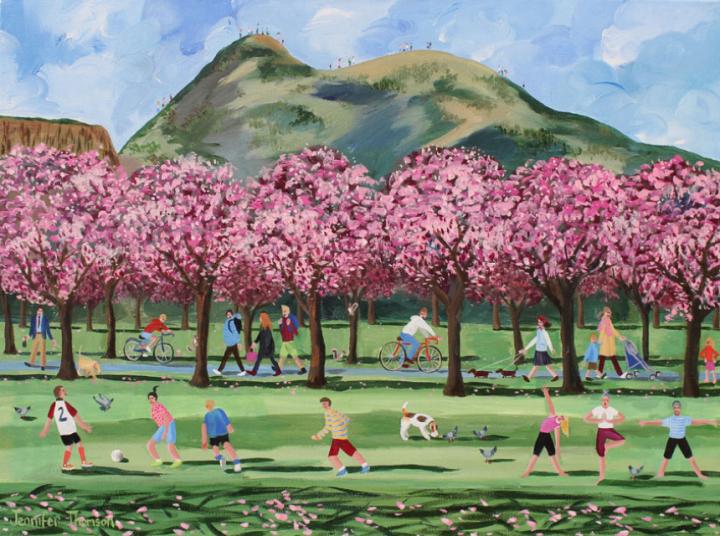Eight Thousand Postcards Later: Why Don’t You Write Me, 1.5 Years On
MindLetter post written by Dr Kitty Wheater.
Dear all,
I'm sending you warmest wishes for Easter, for daffodils and chocolate eggs and excited children and emergency trips to the vet with over-indulged dogs. (Maybe not that last one. Keep the chocolate out of reach, folks.)
For this week's MindLetter, before I head on leave, I take a look at one of my favourite projects. I know many of you are members; this is for you, and for everyone who wonders what it could be like to put pen to paper a little more often.
Eight Thousand Postcards Later: Why Don’t You Write Me, 1.5 Years On

The knock at the door is another National Gallery of Scotland parcel. This one contains thirty-one large postcards of The Goldfinch, by Carel Fabritius. It’s glossy and beautiful. Every few weeks I check the online shop to see if they have more in stock: I need a hundred for Why Don’t You Write Me. I want them for June, when birdsong will be at its height, and I’ve got Joan Eardley’s Hedgerow With Grasses and Flowers to go with this little chained creature, as if it might set it free. I look for Alexander Moffatt’s portrait of Dame Muriel Spark, too. Dignified and imposing, with her bright red scarf and her glasses resting in her lap, I want her for October, when the temperatures will be turning and book-lovers can take to their sofas with hot tea and a Scottish literary classic.
I founded Why Don't You Write Me, a postcard-writing, art, heritage and connection project, in December 2020. Our experience of online connection was already more than complex by then: we were not just bored, but also overwhelmed by hours staring at faces on the screen. Zoom burnout was ubiquitous. It felt like there had to be better ways of reaching the people we loved, missed, wanted to say thank you or well done to. In putting pen to paper, Why Don’t You Write Me was a uniquely offline form of connection, designed to connect the UoE community to each other and the people they care about, at a time when tangible connection was so hard to come by.
We started with fifty members, and went up to a hundred. Students and staff across the University received a 6-month subscription to a monthly hand-curated bundle of postcards and notecards. (When I say hand-curated, it was me, sitting on my living-room floor of an afternoon, surrounded by boxes of lovely postcards. It was glorious.) There was only one rule: each month, members were invited to send one of their cards to someone in the university. We highlighted Scottish art, heritage, and artists. I spent hours poring over cards; I familiarised myself with every nook and cranny of Pomegranate Press and Princeton Architectural Press, and wrote to local artists to see what they could supply in bulk. I realise, now, that I was mostly looking for one thing: beauty.
When we are scared and alone, we forget about beauty. Life in winter 2020 was grey and flat, and it was all conducted in front of the computer. Microsoft Teams is not a beautiful interface, and emails do not make the heart sing. Students were stuck in characterless rooms. Staff were working at kitchen tables covered in breadcrumbs and peanut butter. For lonely minds and bodies, it was a state of affairs as empty and desolate as the static of an untuned radio station. Fear and anxiety thrive on boredom, stuckness and isolation; I wanted Jennifer Thomson’s Windy Day on the Meadows to land through someone’s letterbox and make them smile, Catherine Forshall’s Mussels Rising to transport them to the beach, and William Morris to take them to the V&A.

In lives conducted entirely online, we forget, too, about history and place; trapped in an endless parasitical present, we come unmoored from where and who we are. So Angie Lewin guided us to the Scottish Highlands, we skated with Reverend Robert Walker on Duddingston Loch in the 1790s, and when the cherry blossom came out on the Meadows, Jennifer Thomson took us to the heart of it. I still, thanks to Covid, know the National Gallery’s collections more through its postcards than through hours spent onsite.
Beauty, history, place. For a chaplain working entirely online, the colour and texture of bodily presence out of sight, there was something in it for me too. There was the monthly ritual of preparing the bundles, selecting them by hand, an eye for colours, this choice for this person, an extra for that one’s teenage daughter. There was something for me about writing each name label by hand every month, and writing each tiny accompanying notecard: ‘blue for the summer sky,’ I’d write in June as I put pastel blue envelopes in the post. My hand ached as I worked through the spreadsheet, but I loved scrolling down the list of addresses, dispatching all over Edinburgh, to streets I’d not seen before the pandemic confined me in Marchmont. Members might live a few doors down from each other without knowing; I could sense us, all over the city, opening our bundles, with their promise of care and attention. There were the internationals – students in New York and New Brunswick, Germany and India, studying online, barred from Edinburgh itself by the tiny virus coughing and sneezing and breathing its way insidiously through our global ranks. As the project went on, whole households would sign up. I’d send multiple bundles to flats on Melville Terrace, or Warrender Park Road, or O’Shea North.
There was something rather special about these cohorts of people, distanced from each other and from me, held together by the quiet flow of cards through the post. Most Why Don’t You Write Me members were students and staff I’d never met in person. Many of them didn’t even join the monthly online gatherings, when Geoffrey Baines and I explored themes of connection, disconnection, attention, and play, through art, writing and doodling. But I wrote their names again and again in fountain pen, and occasionally I’d get a polite email with a change of address. There are Why Don’t You Write Me members who have been with us all the way through. I wouldn’t know them if I walked past them on the street, but they silently renew their subscription at the end of six months, and I recognise the name in my inbox, and it makes me smile. Connection and community are not always loud, and do not always announce themselves; they can be as quiet as the scribble of pen on card.

And there were the stories. In the depths of the pandemic, I heard who members had written to, and what had happened next. They were some of the most moving tales I've heard at any time over this period of distance, isolation, grief, and uncertainty. I heard of healthcare workers, grateful to be remembered; loved ones far away, relishing a piece of actual, real-life handwriting; brownies sent by return of post; elderly relatives with little energy for Zoom, but enough for a notecard; contact with old friends re-established; and childhood haunts in the Scottish landscape, recognised, decades on, in a 1920s black-and-white picture. I received letters direct from students and staff, too. Joyful, some, but for others, quiet shame or pain. I thought of them when I sent out the next bundles, the New York Botanical Garden or the blue-sepia print of George Square in 1962, the Scottish local artists and household names, plants and animals, landscapes and textile prints. I knew that for some, shielding or stuck abroad, our cards held between finger and thumb were their only tangible link with the University.
Over the last eighteen months, Why Don’t You Write Me has had nearly two hundred members from across the University community. Cards have been sent to colleagues, supervisors, line managers and students. The project serves a hundred UoE members at any one time. Each month, five hundred of our cards are sent across the University and all over the world; that's approximately eight thousand cards to date. Connection, beauty, history, place: these things, we’ve learned, really matter. Next month, in May, around fifty spots are opening up, as one big cohort comes to an end. The cards are ready. Join us, if you like; tell a friend, or fish out that old postcard you bought on a museum trip years ago, and send it to someone you love. It makes a difference; eight thousand recipients know.
Warm wishes
Kitty

